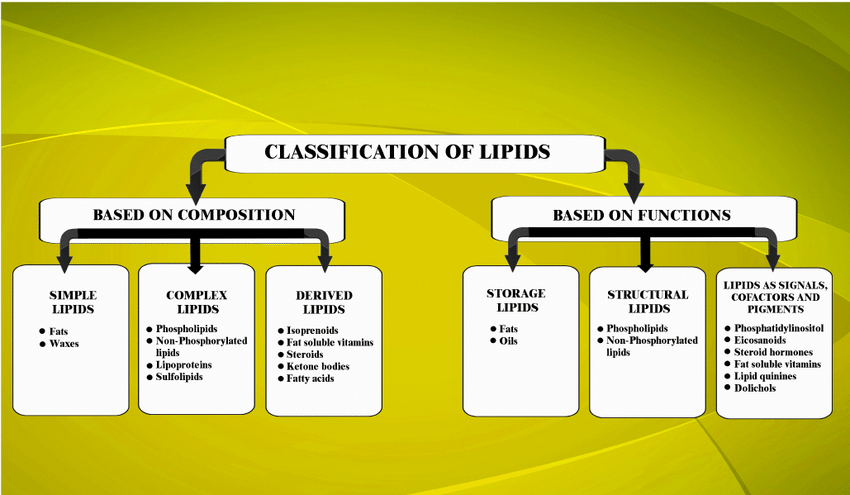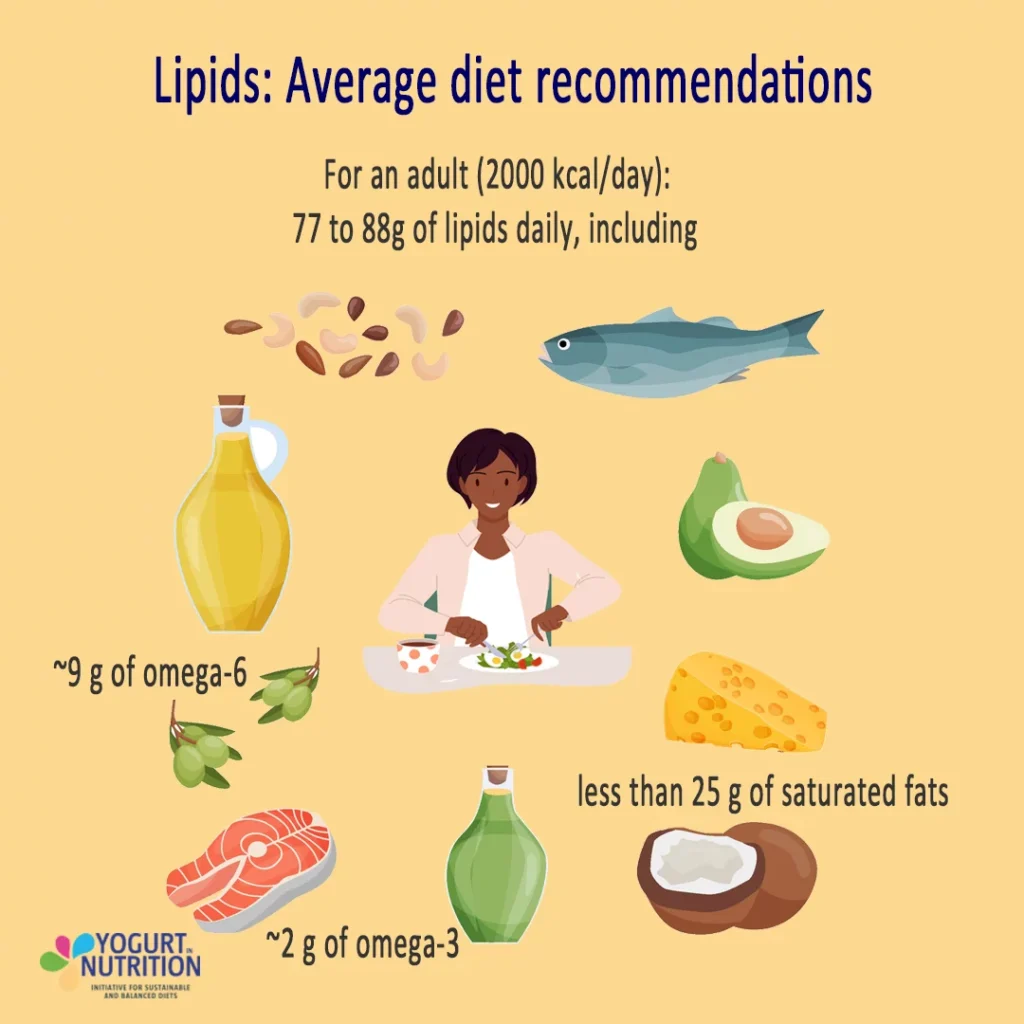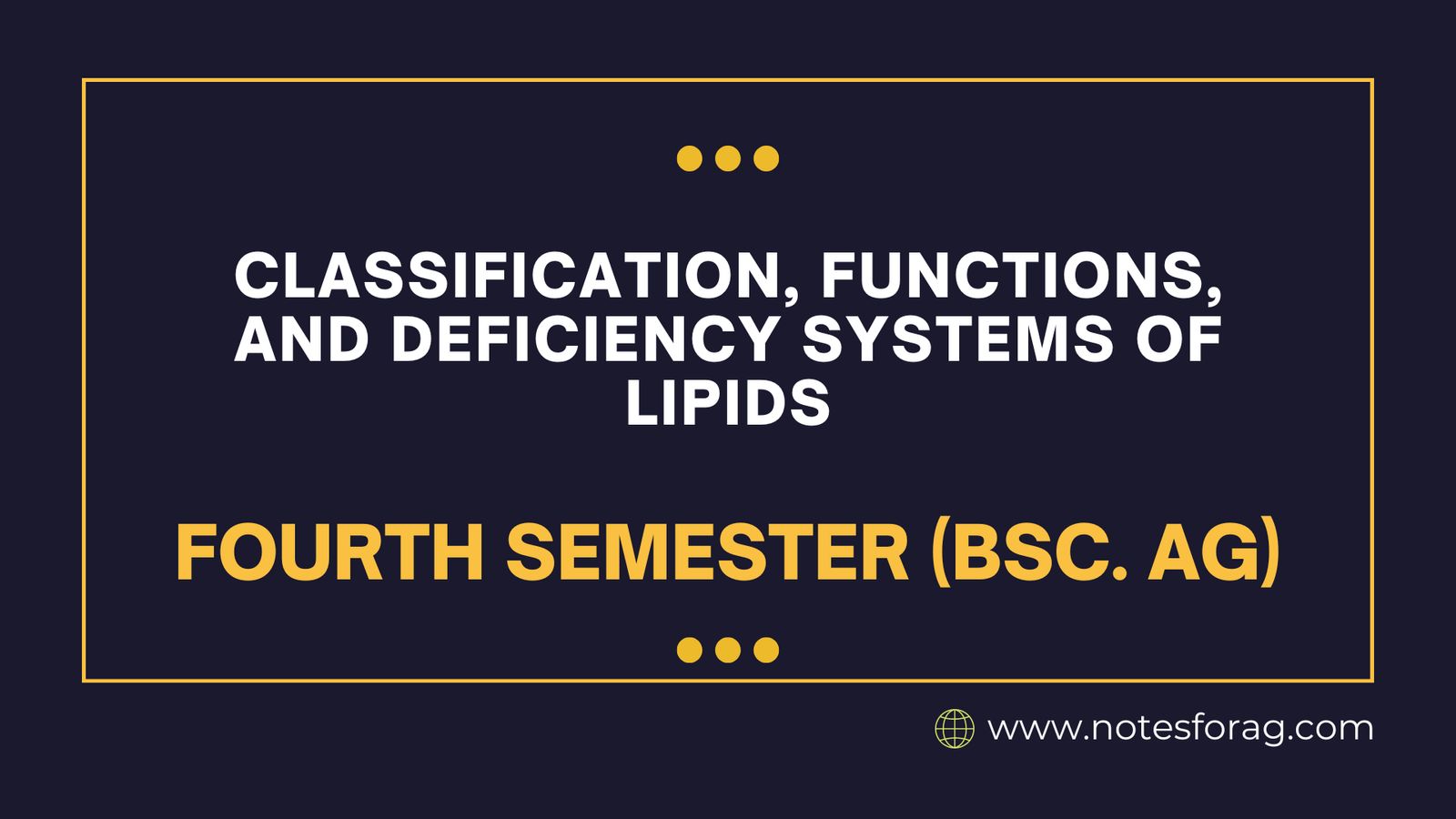Lipids, often called fats are a broad class of chemical substances that are necessary for life. They are involved in everything from cell signalling to energy storage in the body. This section discusses the various categories of lipids, their essential roles, and the effects of deficit.
Table of Contents
Classification of Lipids
Due to their varied structures and functions, lipids are classified into several main categories:
- Fatty Acids: Fatty acids are lengthy chains of hydrocarbon molecules containing an acidic group that make up the majority of lipid. They can be classified as unsaturated (having one or more double bonds) or saturated (having no double bonds). Monounsaturated fats (one double bond) and polyunsaturated fats (many double bonds) are two more classifications for unsaturated fats.
- Triglycerides: The primary form of fat storage in the body, triglycerides are formed by three fatty acids esterified to glycerol. They are a concentrated source of energy.
- Phospholipids: Phospholipid, which are crucial parts of cell membranes, resemble triglycerides in structure but only have one phosphate group rather than one fatty acid. As a result, they develop a polar head and a nonpolar tail, which enable them to build bilayer structures that divide the interior of the cell from its surroundings.
- Sterols: A group of lipids that contains cholesterol, an essential part of cell membranes and a starting point for several hormones, including oestrogen and testosterone. The body can synthesise cholesterol or get it from the diet.
- Other Lipids: Other important lipid types include waxes (protective coatings on skin and feathers), and eicosanoids (signaling molecules involved in inflammation and immune response).

Functions of Lipids
Lipids serve a variety of crucial functions in the body:
- Energy Storage: Triglycerides are the most efficient form of energy storage in the body. They are deposited in adipose tissue and released as needed for fuel.
- Cell Membrane Structure: Phospholipid are essential for maintaining the integrity and function of cell membranes. They regulate the passage of substances into and out of cells.
- Insulation and Protection: Fat deposits around organs and under the skin provide insulation and cushioning, protecting internal organs from injury.
- Hormone Production: Cholesterol is a precursor for several hormones, including sex hormones like testosterone and estrogen, as well as vitamin D.
- Fat-Soluble Vitamin Absorption: Certain vitamins (A, D, E, and K) are fat-soluble, meaning they require dietary fat for proper absorption and utilization.
- Signaling Molecules: Eicosanoids derived from fatty acids act as signaling molecules involved in inflammation, blood clotting, and immune response.

Deficiency of Lipids
A shortage of necessary lipid can have detrimental effects in addition to the health issues associated with eating too much fat, such as obesity and heart disease:
- Energy Depletion: Without adequate fat stores, the body may struggle to maintain energy levels, leading to fatigue and weakness.
- Stunted Growth and Development: In children, a deficiency in essential fatty acids can hinder growth, development, and brain function.
- Skin and Hair Problems: Lipid contribute to healthy skin and hair. Deficiency can cause dry, flaky skin and brittle hair.
- Vitamin Deficiencies: Deficiencies in fat-soluble vitamins (A, D, E, and K) can occur due to insufficient dietary fat intake, leading to various health problems.
- Hormonal Imbalances: Deficiencies in cholesterol, a precursor for some hormones, can affect hormone production and regulation.

It’s important to note that the body can synthesize some lipid, but essential fatty acids, such as linoleic acid and alpha-linolenic acid, cannot be produced and must be obtained from the diet.
Additional Points:
- Dietary Sources: Healthy dietary sources of lipid include fatty fish (salmon, tuna), nuts (almonds, walnuts), seeds (flaxseeds, chia seeds), avocados, olive oil, and vegetable oils.
- Saturated vs. Unsaturated Fats: Limiting saturated fats is recommended since they tend to increase LDL (“bad”) cholesterol levels. Monounsaturated and polyunsaturated fats in particular are thought to be heart-healthy and can assist in lowering LDL cholesterol.
By understanding the classification, functions, and deficiency effects of lipid, you can make informed dietary choices. Aim for a balanced intake of healthy fats to support your body’s various needs and maintain optimal health.
Frequently Asked Questions (FAQs)
What is the classification system of lipids?
Lipids have been broadly subdivided into “simple” and “complex” groups, with simple lipid being those yielding at most two types of products on hydrolysis (e.g., fatty acids, sterols, and acylglycerols) and complex lipid (e.g., glycerophospholipid and glycosphingolipid) yielding three or more products
What are the deficiency of lipids?
In rare lipid disorders, there may be lipid deficiency disease. In this case, the person has very little body fat. The muscles look prominent, making the body look disproportionate.
Why are lipids classified as lipids?
Lipids are a wide range of chemical molecules that are grouped together because they do not interact significantly with water. These compounds include fats, oils, hormones, and certain membrane components.
Related Articles

